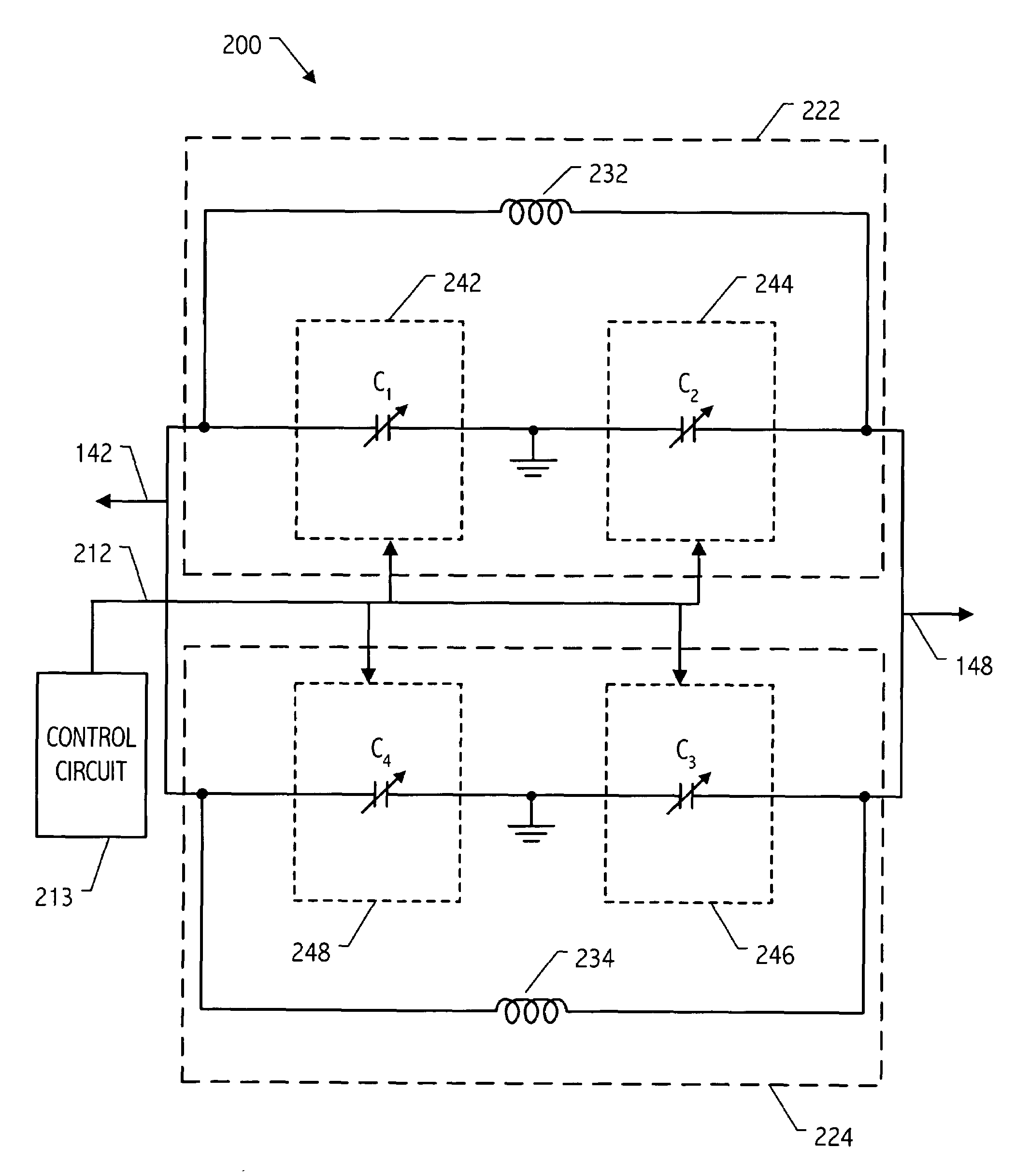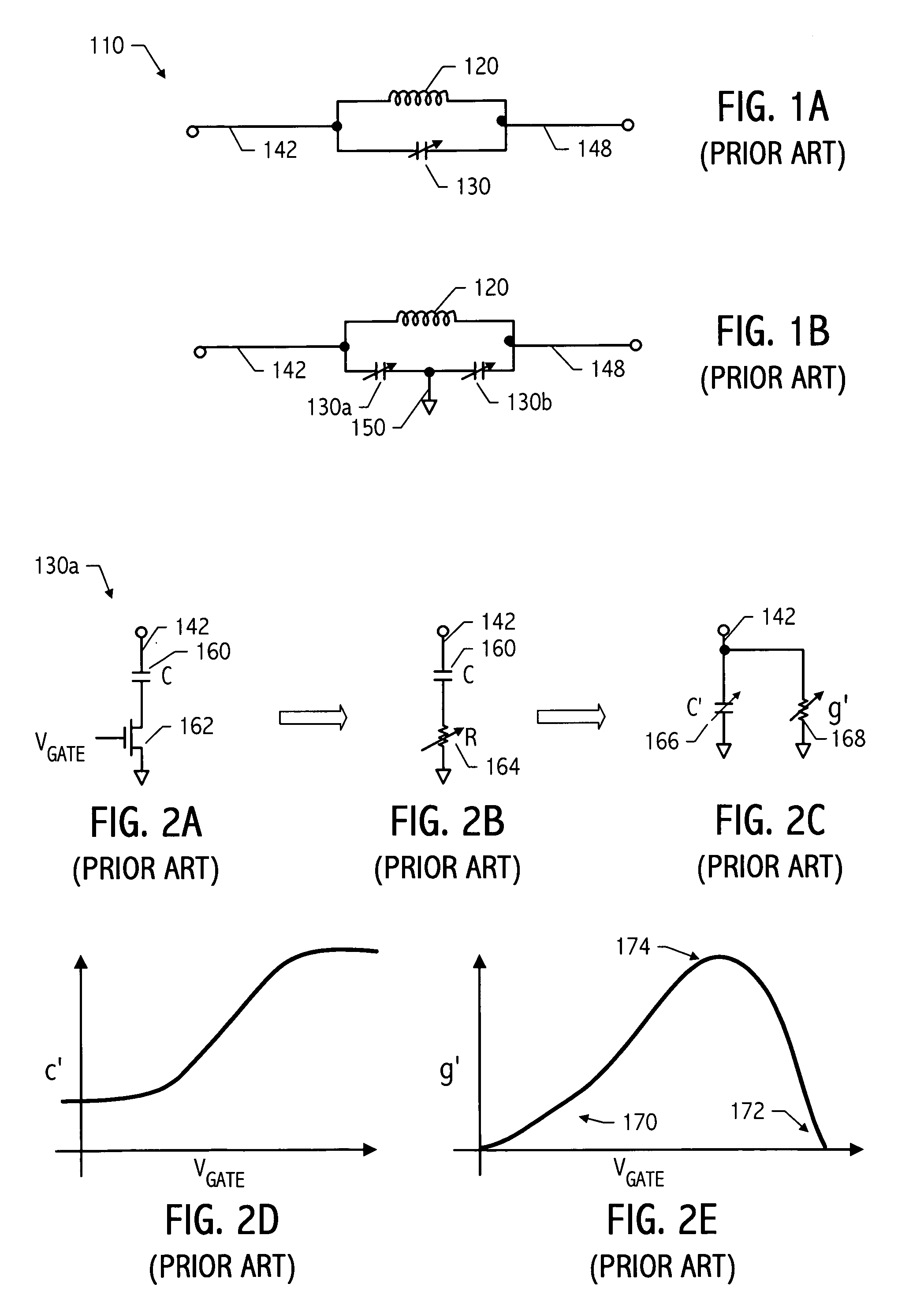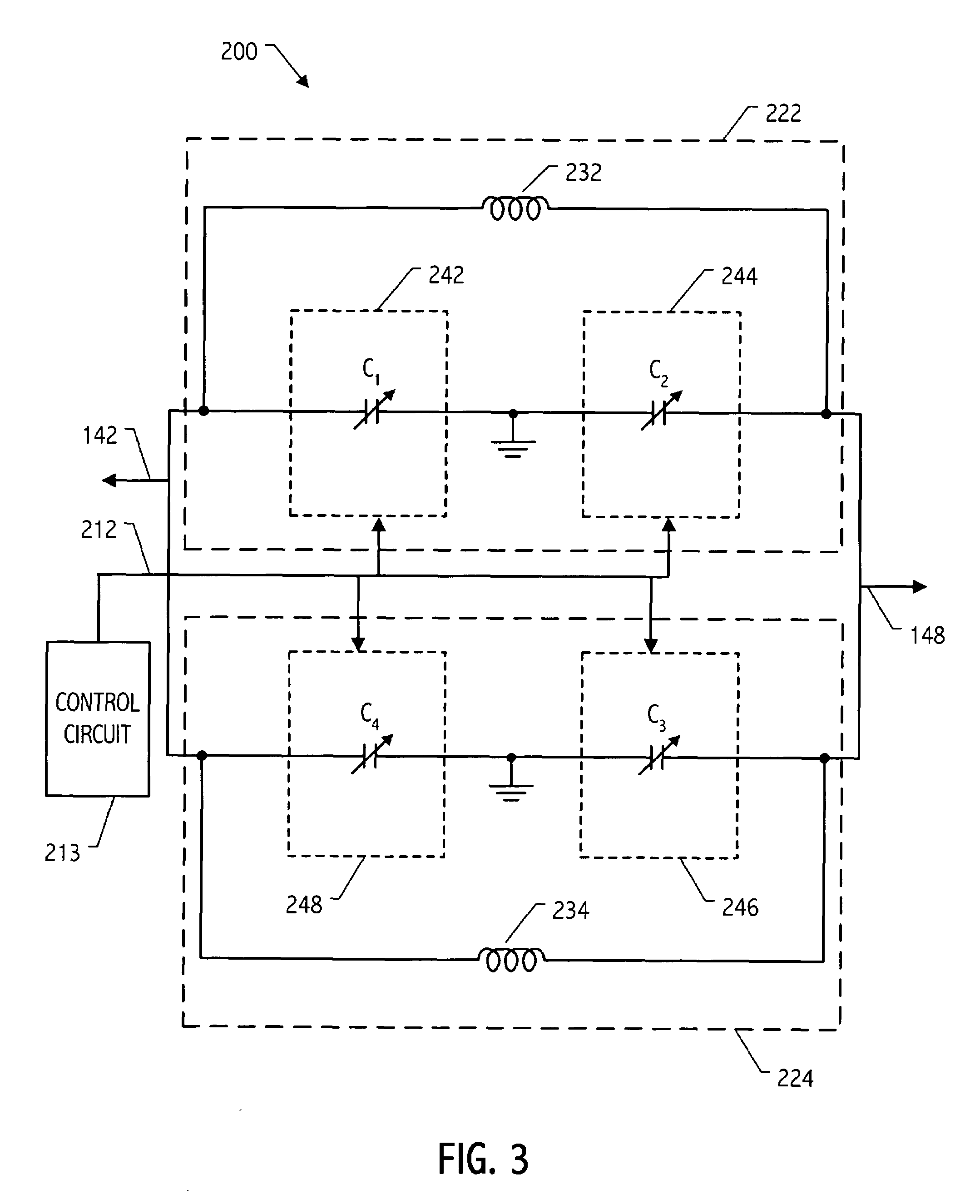Imbalanced differential circuit control
a differential circuit and control circuit technology, applied in the field of electrical signal adjustment, can solve the problems of large amount of printed circuit board space, difficult to achieve the performance required of modern systems, and large amount of discrete implementation, so as to improve the control of circuits and signals, improve the control of gain and noise, and achieve greater control
- Summary
- Abstract
- Description
- Claims
- Application Information
AI Technical Summary
Benefits of technology
Problems solved by technology
Method used
Image
Examples
Embodiment Construction
)
[0040]The following discussion is intended to provide a detailed description of at least one example of the invention to aid those skilled in the art to understand and practice the invention. For example, FIG. 1 and the following figures, and the discussion related thereto, describe at least one exemplary variable capacitance control system. This exemplary system provides a useful reference in discussing various aspects of the invention. Of course, the description of the system has been simplified for purposes of discussion, and it is just one of many different types of appropriate systems that may be used in accordance with the invention. Consequently, the following discussion should not be taken to be limiting of the invention itself. Rather, any number of variations may fall within the scope of the invention which is properly defined in the claims following this description.
[0041]FIG. 1A shows a resonant LC tank circuit 110 having a variable capacitor 130 coupled in parallel wit...
PUM
 Login to View More
Login to View More Abstract
Description
Claims
Application Information
 Login to View More
Login to View More - R&D
- Intellectual Property
- Life Sciences
- Materials
- Tech Scout
- Unparalleled Data Quality
- Higher Quality Content
- 60% Fewer Hallucinations
Browse by: Latest US Patents, China's latest patents, Technical Efficacy Thesaurus, Application Domain, Technology Topic, Popular Technical Reports.
© 2025 PatSnap. All rights reserved.Legal|Privacy policy|Modern Slavery Act Transparency Statement|Sitemap|About US| Contact US: help@patsnap.com



